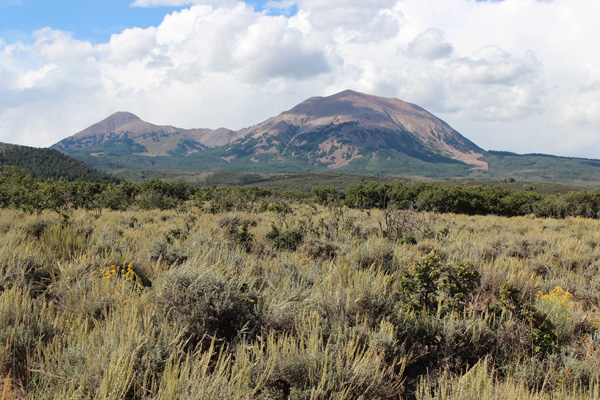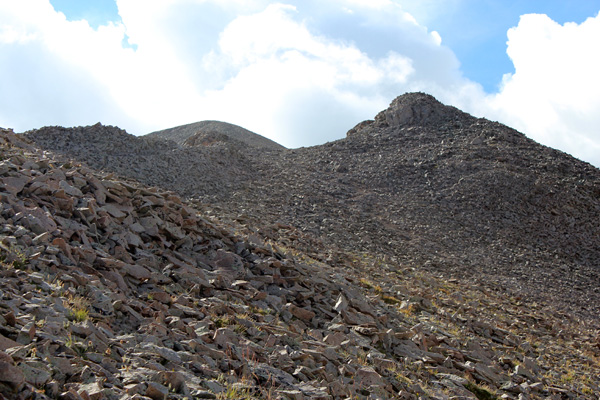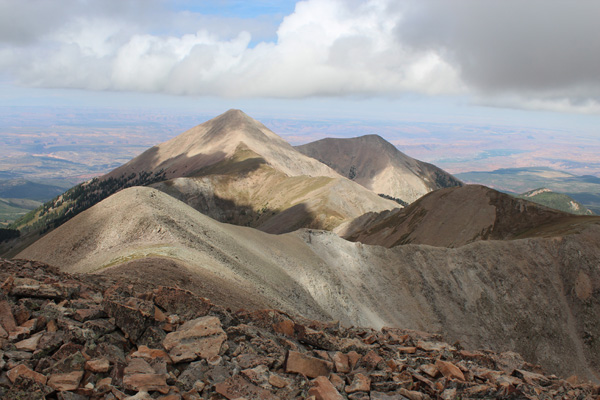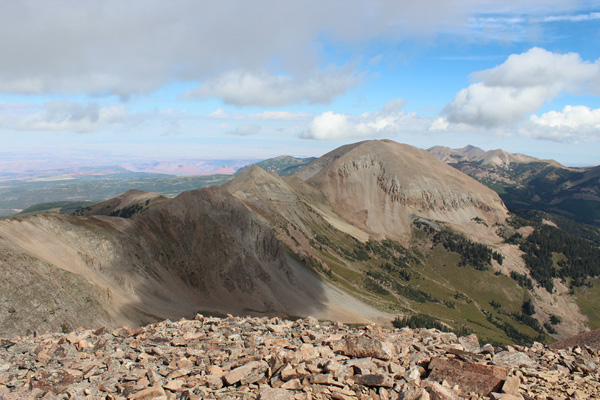In early September I was headed to Durango, Colorado, to meet up with some friends, hike into the Chicago Basin, and summit a few Colorado Fourteeners with them. But the weather forecasts kept deteriorating and we eventually decided to go our own ways.
At that point I was in Spanish Fork, Utah. I had maps and route information for several Utah prominence peaks with me and a week to work with. Although I had driven through Utah many times on my way to and from Colorado over the past decades the only Utah peak I had previously visited was Kings Peak in the High Uinta Mountains. So I eagerly decided to spend the week hiking several Utah prominence peaks and thereby sample several Utah mountain ranges I had not yet visited.
My first goal was to summit Mount Peale in the La Sal Mountains east of Moab, located in the Manti-La Sal National Forest. Mount Peale has 6161 feet of prominence and 12721 feet of elevation. The La Sal range is quite visible from Arches National Park where a friend and I first noticed the range to the southeast when we visited the Park on our way to Colorado in September 1982. I have noted the range many times from I-70 on my visits to Colorado since then and I was eager to finally visit the La Sals and summit Mount Peale, one of the 57 “Ultra Prominence” peaks of the 48 Contiguous US States.
I followed the excellent directions to La Pal Pass and the Burlfriends Trailhead at 10125 feet provided by summitpost.org. I camped that afternoon near the trailhead and oriented myself to the south-facing gully I would use to reach the summit ridge of Mount Peale the next morning. It was a pleasant night.
The next morning, September 2, I started on the Burlfriends Trail and followed it to a junction with the Tuk Trail where a sign indicated the ridgeline was 1.5 miles ahead on it. I followed that trail a short distance until I decided it was headed too far west and traversed across a meadow to intersect the jeep trail and climbers trail leading up into the south-facing gully I saw from camp. The gully narrows and lays back a bit as you climb upward onto talus. Eventually the trail becomes more indistinct and I climbed the talus slopes on occasional boot tracks up to my right (east) to reach the summit ridge west of the summit. I regained the climbers’ trail and followed it to the summit.
It was a partly cloudy morning and the clouds cast shadows adding depth to the views. Mount Tukuhnikivatz (“Tuk”) rose to the west along a long ridge. Mount Tuk is more visible than Mount Peale from the west and I think I previously mistook Mount Tuk for Mount Peale. Now I know the difference. In the above view Moab lies at the head of the green valley visible to the right of Mount Tuk.
To the north Mount Mellenthin was decorated with cloud shadows. The Colorado River was visible just left of it in the distance, while Mount Waas rose in the distance to the right. I searched repeatedly around and within the talus walls enclosing the summit looking for a benchmark or summit registry, but found only a quite small USGS marker bolted to a rock.
I descended down the gully and followed the jeep trail and the Burlfriends trail back to the trailhead and pass. It was a popular day for ATVers traveling across the pass from the west and a few mountain bikers on the trail. I loaded up and headed for my next goal, Abajo Peak near Monticello, Utah.





Leave a Reply